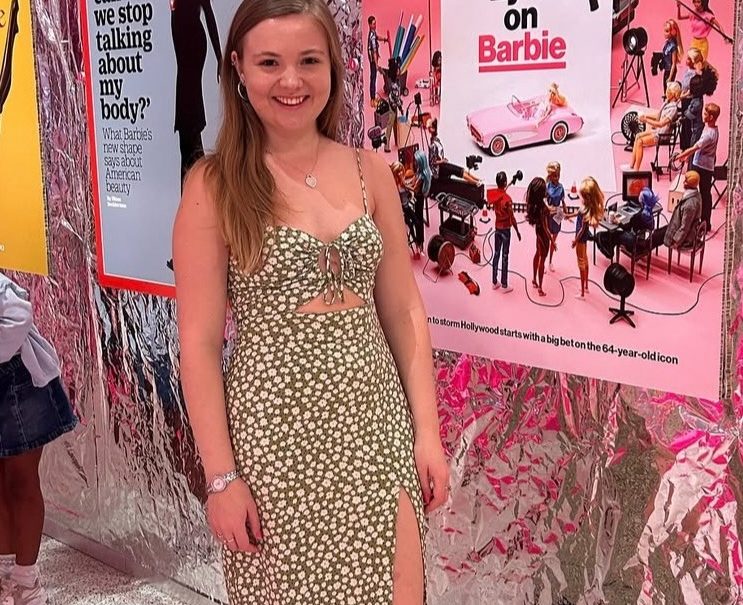Physical imperfections such as scars have been negatively construed for years as undesirable. That needs to change.
Throughout history, there has been a repeated trope in literature, films and art that most villains usually sport some kind of facial disfigurement, as an identifying characteristic of their villainy.
Be it welt, boil, blemish or scar, the baddie is instantly recognisable as sinister and capable of wrongdoing, just by a physical imperfection.
The 1994 classic The Lion King even named its villain Scar after his pronounced feature – a long, jagged cut adorning a menacing green eye.
Bond, James Bond, has also fought off not one but five famous adversaries during his exploits, with Ernst Blofeld, Renard, Emilio Largo, Le Chiffre and Raoul Silva all sporting a physical deformity.
Boris Karloff as Frankenstein, Count Orlok in Nosferatu and Two-Face from Batman are similarly adorned with otherwise imperfect features, to put it mildly.
Some physical wounds have even become so widely recognised that linguistics are forced to accommodate them, with the ominous “Glasgow Smile” title being spawned after a turbulent history within the Scottish city.
The incision is made by making a cut with a blade from each side of the victim’s mouth towards their ears, leaving two scars in the shape of a smile, and originates from 1920.
Famously, it adorns the countenance of Sons of Anarchy actor Tommy Flanagan, after an incident at a bar during his youth.
Harry Potter, with his lightning bolt scar, is probably the sole literary character to possess a facial cut and not be tempted into the forces of evil – however his notorious scar was certainly inflicted by an evil force.
But this oft-repeated image has now become a visual shorthand for evil and is a lazy characterisation that equates physical difference with moral corruption.
What previously seemed nothing more than a convenient storytelling device carries real and harmful consequences for individuals living with similar physical differences every day, and this needs to change.
Rani Carmichael, 26, underwent kidney surgery aged 15, and now has scars across her torso and back.
“It was a huge thing for me and still is.
“It happened at the worst time, when I was a teenager and wanting to experiment with clothes.
“All my friends were out in nice outfits, and I’d be with them in tights and a hoody and long coat, desperate to hide as much of me as I could, because I felt I looked bad all the time.
“I still have days where I want to hide them, but with age I’ve got to a place where I can wear summer clothing and discuss them with people if they ask.”
Rani is not alone in feeling like this.
While some people afflicted by permanent scars and visible wounds may dress to showcase them, most people continue to struggle with the stigma that comes from obvious bodily imperfections.
In 2022, OnePoll and Mederma found that 28% of 2000 people surveyed felt insecure about body scars and tried to hide them as much as possible.
Physical defacements can serve as a permanent reminder of unwelcome experiences and can affect mental health, with the decision to showcase or hide scars influenced by size, location, visibility, or self-esteem, personal preference or even cultural background.
Unfortunately, modern beauty standards have led us to believe that disfigurements are something to hide, and viewing negative representations of the like during formative years can form lasting prejudices that take years to alter.
For millions of people living with physical differences, this can manifest into real-life discrimination, social isolation, and psychological distress.
Caitlin Perry, 28, has a raised scar that stretches from under her chin to her right eye after falling on Brighton Pier as an infant – and has suffered with social anxiety since.
“It is mad that one fall has affected my whole life.
“I wore so much makeup all the way through school to cover it, I wouldn’t go swimming for years in case my concealer came off.
“I still struggle with having my photo taken on any phone that isn’t mine, even 10 years later – I feel like only I know the best lighting and angles to hide it.”
However, despite the long and sordid history of negative associations with imperfection, the tide appears to finally be turning.
Actors KJ Apa, Miles Teller and Johnny Flynn all possess facial scars from their youth, with Apa’s incident involving a trampoline; Teller surviving a car accident, and Flynn being attacked by a dog at the age of three.
All three have enjoyed successful careers as handsome, charming leading men, their “good” characters unaffected by their visible imperfections.
Kylie Jenner also took to Instagram in December 2015 with a photo of a scar above her left knee, captioned, “I love my scar”.
The wound stems from a childhood incident where she fell from a gate, but Jenner refused to accept negative comments online mocking the abnormality.
Princess Eugenie during her 2018 wedding also wore a white gown that deliberately dipped in the back to showcase a spinal scar, a remnant from a childhood scoliosis operation.
She displayed it to inspire others living with the disease, and to thank the medical professionals who cared for her at the time.
All of which leads me to my own experiences with scarring.
My dad has a vertical white scar on his torso from an emergency operation to remove his spleen, aged 19.
My mother sports caesarean stitching along her lower stomach after a twin delivery, and my uncle possesses a scar across his entire right hand, after breaking up a dog fight when he was 16.
Personally, I have a visibly marked left foot from a childhood accident; a scar on my forehead from cutting my head open, and six prominent scars dotted across my abdomen after keyhole surgery in 2023.
Thankfully, due to my family’s own experiences, I grew up thinking so-called “imperfections” were normal for everyone, and so have been surprised over the years at comments from onlookers when I wear clothing that not only displays but emphasises these deviations.
Soon, this collection will be added to by scars on my left thigh and right forearm, after I have two biopsies to remove skin cancer related sarcomas.
I refuse to feel downtrodden by these; despite knowing I will be left with permanent scarring.
While occasionally I do dress in a way to conceal the marks, I mainly want to showcase them, in an effort to warp the ideas that “the perfect body” is something to strive for.
There is nothing to be gained, and actually so much is lost, when we erase experience from our bodies.
Scars, cuts, freckles, birthmarks or any other personal mark on skin differs between every single person and tell stories long after we ourselves may have forgotten where we got them from.
Finally, the clothing brands ASOS and Zara have been praised for having models display scoliosis scars, which is a step in the direction of casting aside long-held prejudices around physical defects.
Rachel Gupta, 49, is a personal stylist from Oldham, who utilises both companies in her business.
“I survived a house fire at the age of six but still have scars on my legs from it.
“For so long, I thought they looked angry and inflamed, but I also love swimming, so forced myself into lessons as often as I could.
“I had to get used to the stares, and now I love to dress others in a way that helps them feel confident about their imperfections.”
Most of Rachel’s clients also wish to embrace surgical scars, and so feel confident asking her for help, knowing she understands.
“People with tattoos will dress to best show off their tattoos, and I do feel the same way about my scars.
“For better or worse these things are a part of me now, and I want to embrace them.”




